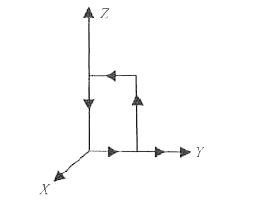A flat coil with a cross-sectional area S and with N turns is placed in a magnetic field. The leads of the coil are connected to an oscillograph. When the coil is moved out of the lield, an induction emf is generated in it, and the oscillogram of this emf is shown in the figure. How do the maximal value of the emf, ∈Im and the area under the curve depend on the rate with which the coil is moved out of the field?
Step by step video & image solution for A flat coil with a cross-sectional area S and with N turns is placed in a magnetic field. The leads of the coil are connected to an oscillograph. When the coil is moved out of the lield, an induction emf is generated in it, and the oscillogram of this emf is shown in the figure. How do the maximal value of the emf, in_(Im) and the area under the curve depend on the rate with which the coil is moved out of the field? by Physics experts to help you in doubts & scoring excellent marks in Class 12 exams.
Updated on:21/07/2023Topper's Solved these Questions
Similar Questions
Knowledge Check
A coil of cross-sectional area A having n turns is placed in uniform magnetic field B. When it is rotated with an angular velocity ω, the maximum e.m.f. induced in the coil will be :
A12 nBAωB32 nBAωC3 nBAωDnBAωA rectangular coil of area→Aand number of turns n is placed in a uniform magnetic field vecB. If the coil carries a current I, then the torque acting on the coil is given by
Ani(→A.→B)B1n(i→A×→B)C1n(i→A.→B)Dni(→A×→B)A flat coil of n turns, area A and carrying a current I is placed in a uniform magnetic field of magnitude B. The plane of the coil makes an angle θ with the direction of the field. The torque acting on the coil is
ABInAsinθBnAIBsinθCBInAcosθDBIn2Acosθ
A coil is placed in a constant magnetic field. The magnetic field is parallel to the plane of the coil as shown in Fig. 3.28. Find the emf induced in the coil if B increasing.

View SolutionA coil having an area 2m2 is placed in a magnetic field which changes from 1wb/m2 n interval of 2s. The e.m.f. induced in the coil is:
View SolutionA rectangular coil of area of cross-section is placed as shown. A magnetic field B is applied along Z-axis. The torque on the coil is

View SolutionA rectangular coil is placed in a region having a uniform magnetic field B perpendicular to the plane of the coil. An emf will not be induced ion the coil if the

View SolutionA flexible wire bent in the form of a circle is placed in a uniform magnetic field perpendicular to the plane of the coil. The radius of the coil changing as shown in figure. The graph of induced emf in the coil is represented by

View Solution


